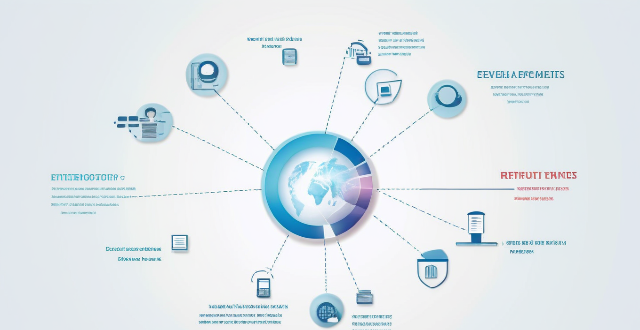Network slicing is a feature of 5G technology that allows operators to create multiple virtual networks on a shared physical infrastructure. This enables them to offer customized services with specific quality of service (QoS) and quality of experience (QoE) requirements for different types of customers and applications. The implementation of network slicing involves several key components such as Network Function Virtualization (NFV), Software-Defined Networking (SDN), Network Management and Orchestration (MANO), and Policy Management. The steps involved in implementing network slicing include requirement analysis, resource allocation, virtual network function deployment, resource management, policy enforcement, monitoring and optimization, and lifecycle management. Network slicing offers benefits such as customization, resource efficiency, scalability, improved performance, and enhanced security.

Network Slicing in 5G Technology
Network slicing is a revolutionary feature of 5G technology that allows operators to create multiple virtual networks on a shared physical infrastructure. This enables them to offer customized services with specific quality of service (QoS) and quality of experience (QoE) requirements for different types of customers and applications. In this article, we will discuss how network slicing works in 5G technology.
What is Network Slicing?
Network slicing is the process of dividing a physical network into multiple virtual networks, each with its own set of resources, policies, and functionalities. These virtual networks, also known as network slices, can be tailored to meet the specific needs of different use cases, such as mobile broadband, massive Internet of Things (IoT), and critical communications.
Key Components of Network Slicing
The implementation of network slicing in 5G involves several key components:
Network Function Virtualization (NFV)
NFV decouples network functions from dedicated hardware appliances and runs them on standardized servers, switches, and storage devices. This allows for the creation of virtual network functions (VNFs) that can be flexibly deployed and managed within network slices.
Software-Defined Networking (SDN)
SDN separates the control plane from the data plane, enabling centralized management and dynamic reconfiguration of network resources. This makes it possible to allocate and manage resources for each network slice independently.
Network Management and Orchestration (MANO)
MANO provides the framework for lifecycle management of VNFs and network slices, including onboarding, instantiation, scaling, healing, and termination. It ensures that the right resources are allocated to each network slice based on its requirements.
Policy Management
Policy management defines the rules and constraints for resource allocation, performance guarantees, and security requirements within each network slice. It ensures that the desired QoS and QoE are maintained for each slice.
Steps Involved in Network Slicing
The following steps are involved in implementing network slicing in 5G:
1. Requirement Analysis: Identify the QoS and QoE requirements for different use cases and applications.
2. Resource Allocation: Allocate the necessary resources (e.g., bandwidth, latency, reliability) to each network slice based on its requirements.
3. Virtual Network Function Deployment: Deploy VNFs within each network slice using NFV.
4. Resource Management: Manage resources dynamically using SDN to ensure optimal performance for each network slice.
5. Policy Enforcement: Apply policies to enforce QoS and QoE requirements within each network slice.
6. Monitoring and Optimization: Continuously monitor the performance of each network slice and make adjustments as needed to maintain desired levels of QoS and QoE.
7. Lifecycle Management: Use MANO to manage the entire lifecycle of VNFs and network slices, including onboarding, instantiation, scaling, healing, and termination.
Benefits of Network Slicing in 5G
Network slicing offers several benefits to both operators and end-users:
- Customization: Operators can offer customized services tailored to specific customer needs and use cases.
- Resource Efficiency: By sharing a single physical infrastructure among multiple virtual networks, operators can improve resource utilization and reduce costs.
- Scalability: Network slices can be easily scaled up or down based on changing demand or new service requirements.
- Improved Performance: By isolating traffic within distinct network slices, operators can provide better performance guarantees for critical applications.
- Enhanced Security: Network slicing allows for the implementation of dedicated security measures within each slice, reducing the risk of cross-slice interference or attacks.
In conclusion, network slicing is a powerful feature of 5G technology that enables operators to create customized virtual networks for different use cases and applications. By leveraging NFV, SDN, MANO, and policy management, network slicing provides numerous benefits, including customization, resource efficiency, scalability, improved performance, and enhanced security.